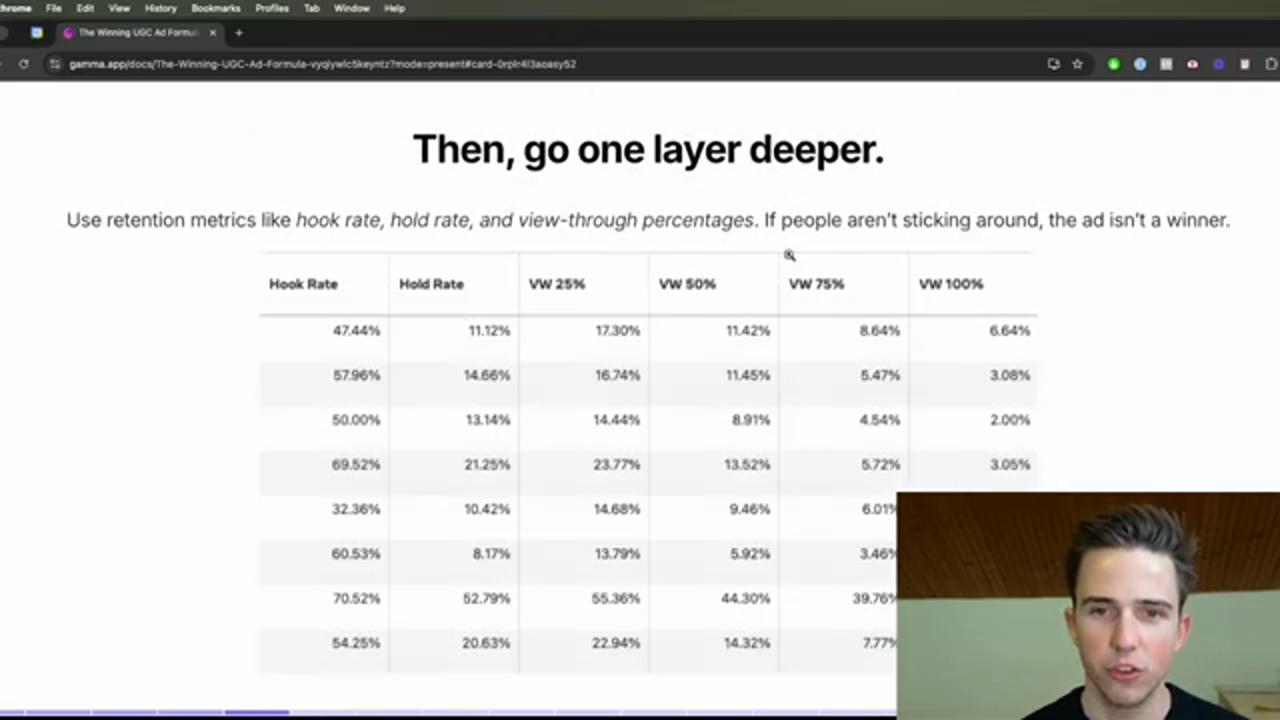The Winning UGC Ad Formula: A Step-by-Step Guide to Scaling Your E-commerce or SaaS Business
The world of e-commerce and SaaS businesses is becoming increasingly competitive, and to stay ahead, you need to have a solid understanding of how to create effective ads that drive sales and conversions. In this article, we will take a closer look at the winning UGC ad formula, a proven strategy for creating high-performing ads that can help you scale your business to new heights.
Introduction to UGC Ads
UGC (User-Generated Content) ads have become a staple in the world of online advertising. By leveraging real people and their stories, UGC ads can help create a sense of authenticity and trust with potential customers. But what makes a UGC ad truly effective? To answer this question, we need to start with the basics.
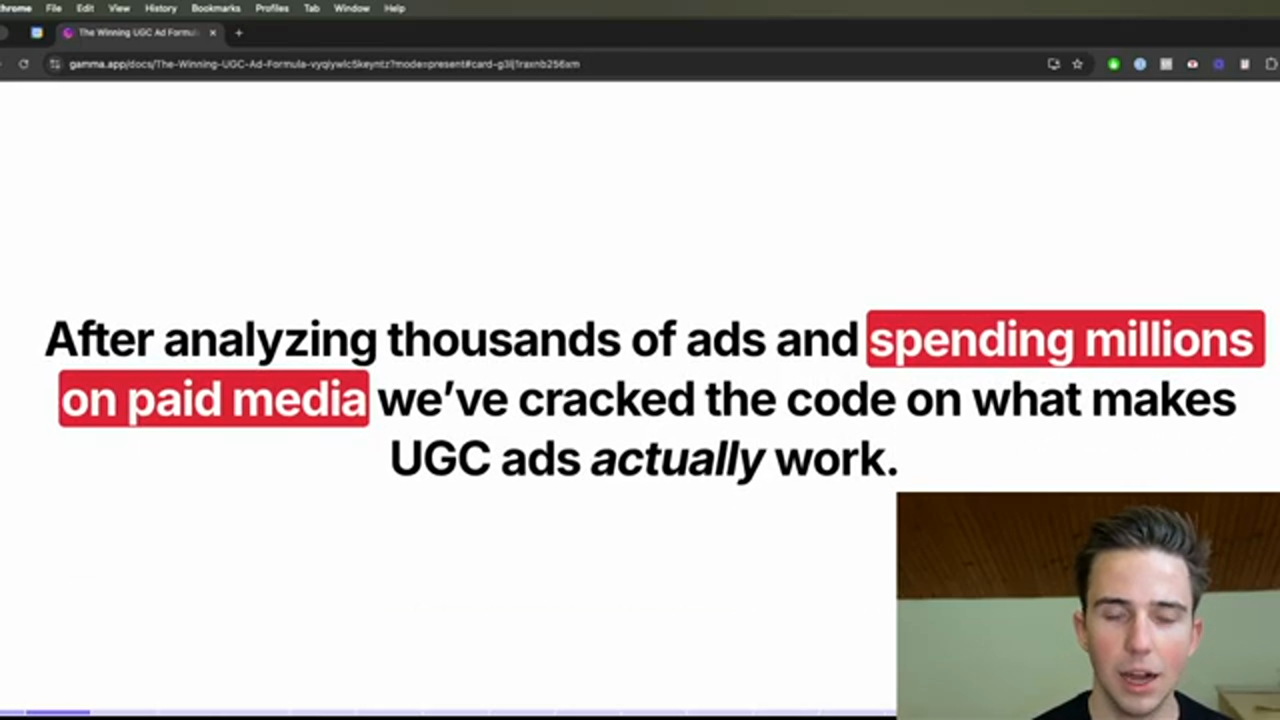 Introduction to the winning UGC ad formula
Introduction to the winning UGC ad formula
The Importance of Research in UGC Ads
Before creating a UGC ad, it's essential to start with research. This involves analyzing your top-performing ads, understanding your customer, and identifying what's working for your brand. By doing so, you can gain valuable insights into what makes your ads tick and how to improve them.
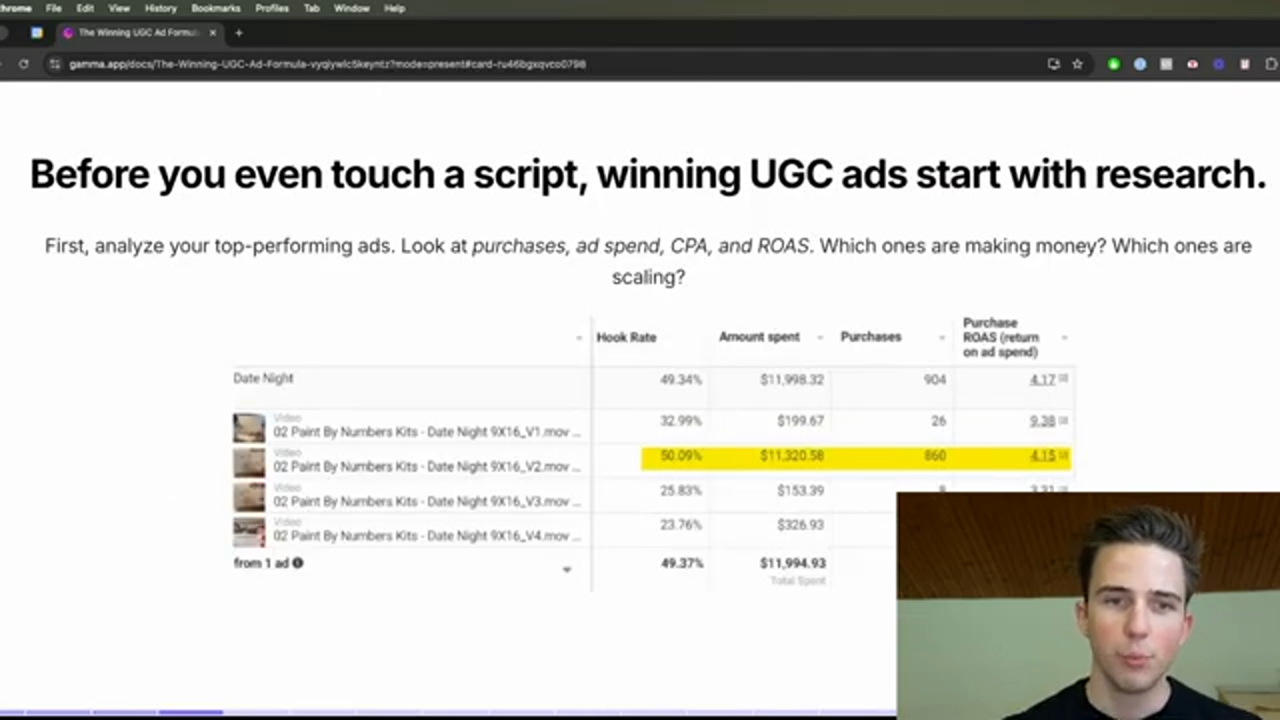 The importance of research in UGC ads
The importance of research in UGC ads
Understanding Your Customer and What Performs Well for Your Brand
To create effective UGC ads, you need to understand your customer and what performs well for your brand. This involves analyzing your top-performing ads, identifying key metrics such as purchases, ad spend, CPA, and retention metrics like hook rate, hold rate, and view-through percentages.
 Understanding your customer and what performs well for your brand
Understanding your customer and what performs well for your brand
The Structure of a UGC Ad
A well-structured UGC ad is essential for driving sales and conversions. The structure of a UGC ad typically consists of four key elements: hook, problem introduction, product solution introduction, and call-to-action.
Hook, Problem Introduction, and Product Solution Introduction
The hook is the most critical part of the ad, and it's essential to grab the viewer's attention within the first 3-5 seconds. The problem introduction expands on the hook, making the viewer feel the pain of not having the product. The product solution introduction shows the product as the natural solution to the problem.
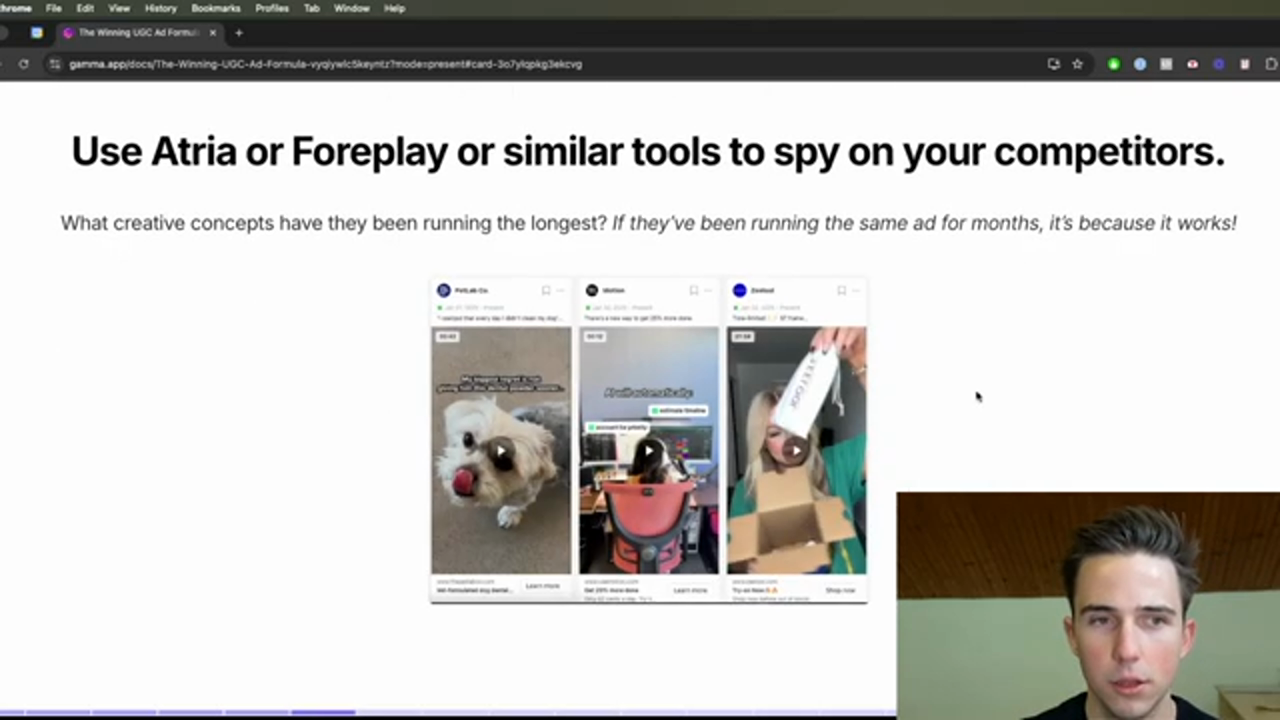 Hook, problem introduction, and product solution introduction
Hook, problem introduction, and product solution introduction
Call-to-Action and Tracking Performance
The call-to-action is the final element of the UGC ad, and it's essential to make it simple and compelling. Tracking performance is also crucial, and it involves monitoring key metrics such as CPA, ROAS, and retention metrics.
 Call-to-action and tracking performance
Call-to-action and tracking performance
Using Atria to Spy on Competitors and Find Winning Concepts
Using tools like Atria can help you spy on your competitors and find winning concepts. By analyzing your competitors' ads, you can identify what's working for them and how to improve your own ads.
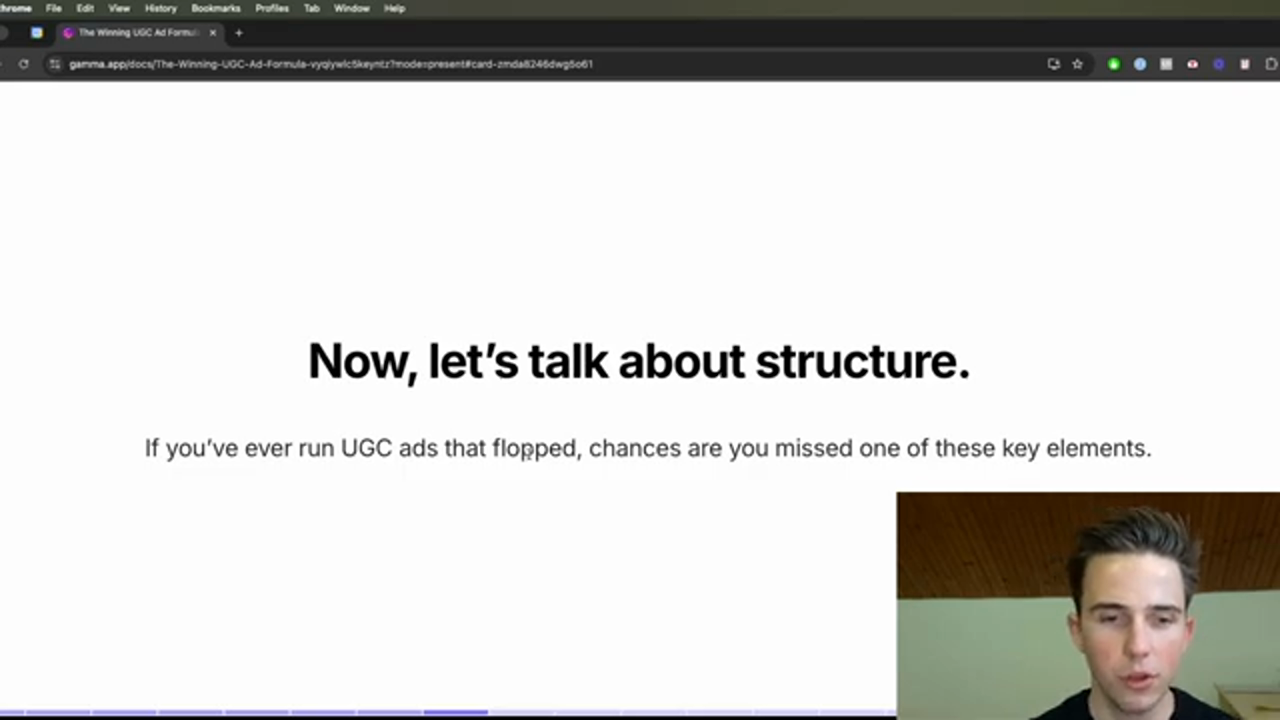 Using Atria to spy on competitors and find winning concepts
Using Atria to spy on competitors and find winning concepts
The Importance of Hook Rate, Hold Rate, and View-Through Percentages
Hook rate, hold rate, and view-through percentages are essential metrics for tracking the performance of your UGC ads. By monitoring these metrics, you can identify areas for improvement and optimize your ads for better performance.
 The importance of hook rate, hold rate, and view-through percentages
The importance of hook rate, hold rate, and view-through percentages
Conclusion and Final Thoughts
In conclusion, creating effective UGC ads requires a deep understanding of your customer, what performs well for your brand, and the structure of a UGC ad. By following the winning UGC ad formula and tracking key metrics, you can create high-performing ads that drive sales and conversions.
Final Call-to-Action and Next Steps
If you're looking to scale your e-commerce or SaaS business with performance-driven ads, consider applying to work with a leading creative agency. By leveraging the winning UGC ad formula and tracking key metrics, you can create high-performing ads that drive sales and conversions.
 Final call-to-action and next steps
Final call-to-action and next steps
Final Thoughts and Takeaways
In final thoughts, creating effective UGC ads requires a deep understanding of your customer, what performs well for your brand, and the structure of a UGC ad. By following the winning UGC ad formula and tracking key metrics, you can create high-performing ads that drive sales and conversions.
Final Conclusion and Recommendation
In final conclusion, the winning UGC ad formula is a proven strategy for creating high-performing ads that drive sales and conversions. By following this formula and tracking key metrics, you can create effective UGC ads that help you scale your e-commerce or SaaS business.

